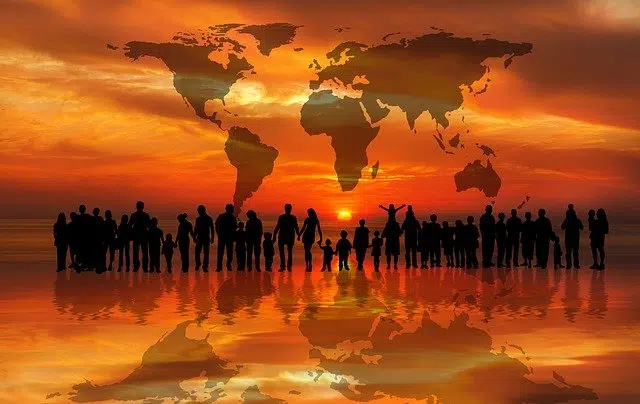
Demographic growth shows how the number of inhabitants of a region changes in a given period.
Growth is the act and result of growing: enlarge, increase, increase. Demographic , for its part, is that related to demography (the statistical analysis of a human group, linked to its evolution or to a certain moment in it).
The change that occurs in a population in a specific period is called demographic or population growth . The quantification of this change is reflected as the modification of the number of inhabitants per unit of time .
Suppose that, at the beginning of 2000 , a region X had 5,000 inhabitants . That same region , at the beginning of 2010 , already had 8,600 inhabitants . In one decade ( 2000-2010 ), therefore, region X had a population growth of 3,600 inhabitants .
What is demographics
Continuing with the definition of demography , it is the science that is dedicated to the study of human populations, taking into account many of their properties, such as their evolution , their structure and their size.
The approach to demography is statistical, so it relates data of different types (such as the number of inhabitants of a region and the date of sampling), analyzes them and draws conclusions, both to understand their current state and to anticipate potential changes and prevent certain problems.

Due to the scarcity of resources, population growth can become a problem.
Analysis of demographic growth
There are various theories that explain and analyze the evolution of demographic growth. Because material resources are scarce, demographic growth can become a problem, since there are not enough resources to satisfy the needs of all people.
The demographic growth rate , on the other hand, expresses in percentage terms the change in the number of members of a population in a given period. For example, a country may record a population growth rate of 4% in one year: its total population therefore grew by 4% in twelve months.
Demographic growth is linked to the difference between the number of births and the number of deaths : if more people are born than die, the population increases. In any case, there are other factors that affect demographics, such as the movement of immigrants and emigrants.
Population in balance
A concept strongly linked to demographic growth is that of population in equilibrium , which is also known as stable or constant population . It belongs to the field of demography and is the population whose demographic growth is zero. The technical terms used in this case are zero population growth , zero population growth , or zero population growth .
For this phenomenon to occur, it is necessary that between two population analysis dates, the net difference between migration, deaths and births is equal to zero. In a case like this, it must be possible to construct the following equality: the number of deaths plus the number of emigrants is equal to the number of immigrants plus the number of births.
Why population growth can be zero
It is important to note that the fact that population growth is zero does not indicate that the region studied is, so to speak, frozen in time; On the contrary, it is possible that it will undergo very important changes in its mortality and birth rates, in addition to its immigration rates and the age distribution of the inhabitants between the two sampling dates, although this depends on the size of the population. new or incoming population (the result of births plus immigration) is equivalent to the amount of unemployed or outgoing population (the sum of emigration plus mortality).
Depending on the particular country and region, population growth has different characteristics, which are linked to the culture and needs of the inhabitants. For example, while in some cities it is very common for most of their young people to emigrate to study abroad, in others the opposite effect occurs, new students arrive every year.
